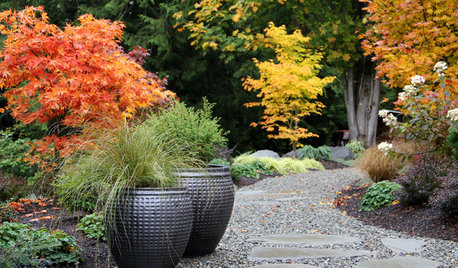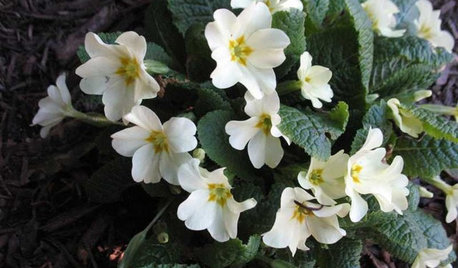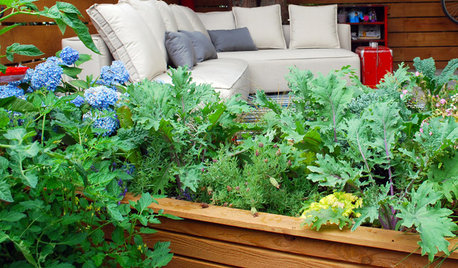no experience but want a container fruit,veg,patio garden
zebrastripes
15 years ago
Related Stories

FALL GARDENING5 Fall Fruits You Can Grow in Containers
Brighten your porch or patio with a potted pomegranate, kumquat, blueberry bush or another great fall fruit
Full Story
FARM YOUR YARDHow to Grow Vegetables in Containers
Get glorious vegetables and fruits on your patio with a pro’s guidance — including his personal recipe for potting mix
Full Story
EDIBLE GARDENSHow to Grow 10 Favorite Fruit Trees at Home
Plant a mini orchard in fall, winter or early spring to enjoy fresh-off-the-tree fruit the following year
Full Story
FARM YOUR YARD10 Easy Edibles to Grow in Containers
These herbs, vegetables and fruits are just as happy in a pot as they are in the ground
Full Story
CONTAINER GARDENSSolve Your Garden Border Dilemmas With Planted Pots
Set your containers free from the patio — placed among plantings in the ground, they fill unsightly gaps, let you experiment and more
Full Story
GARDENING AND LANDSCAPINGCrazy for Fruit Trees
Whether a single citrus or a mini apple orchard, even the smallest landscape space can bear deliriously delicious fruit
Full Story
CONTAINER GARDENS9 Tips for Creating an Artful Container Garden
Make your potted plantings a beautiful sight with these ideas for container types, plant groupings and more
Full Story
SPRING GARDENING7 Great Container Plants for Early-Spring Appeal
Good things sometimes come to those who impatiently head to the nursery for plants that can take a chill
Full Story
LIFEThe Good House: An Experience to Remember
A home that enriches us is more than something we own. It invites meaningful experiences and connections
Full Story
GARDENING GUIDESStep Right Outside for Fresh Herbs and Vegetables
Decks and patios can be convenient spots for edibles, and sometimes they even offer advantages over backyard gardens
Full StoryMore Discussions






Judy_B_ON
louisianagal
Related Professionals
Wrentham Landscape Architects & Landscape Designers · Norton Shores Landscape Architects & Landscape Designers · Sand Springs Landscape Architects & Landscape Designers · Tomball Landscape Architects & Landscape Designers · Harvey Landscape Contractors · Lakeville Landscape Contractors · Northport Landscape Contractors · Palatine Landscape Contractors · Panama City Beach Landscape Contractors · Santa Ana Landscape Contractors · West Chicago Landscape Contractors · Bloomington Window Contractors · Indian Creek Window Contractors · Seattle Window Contractors · Portage Window Contractorsvetivert8
zebrastripesOriginal Author